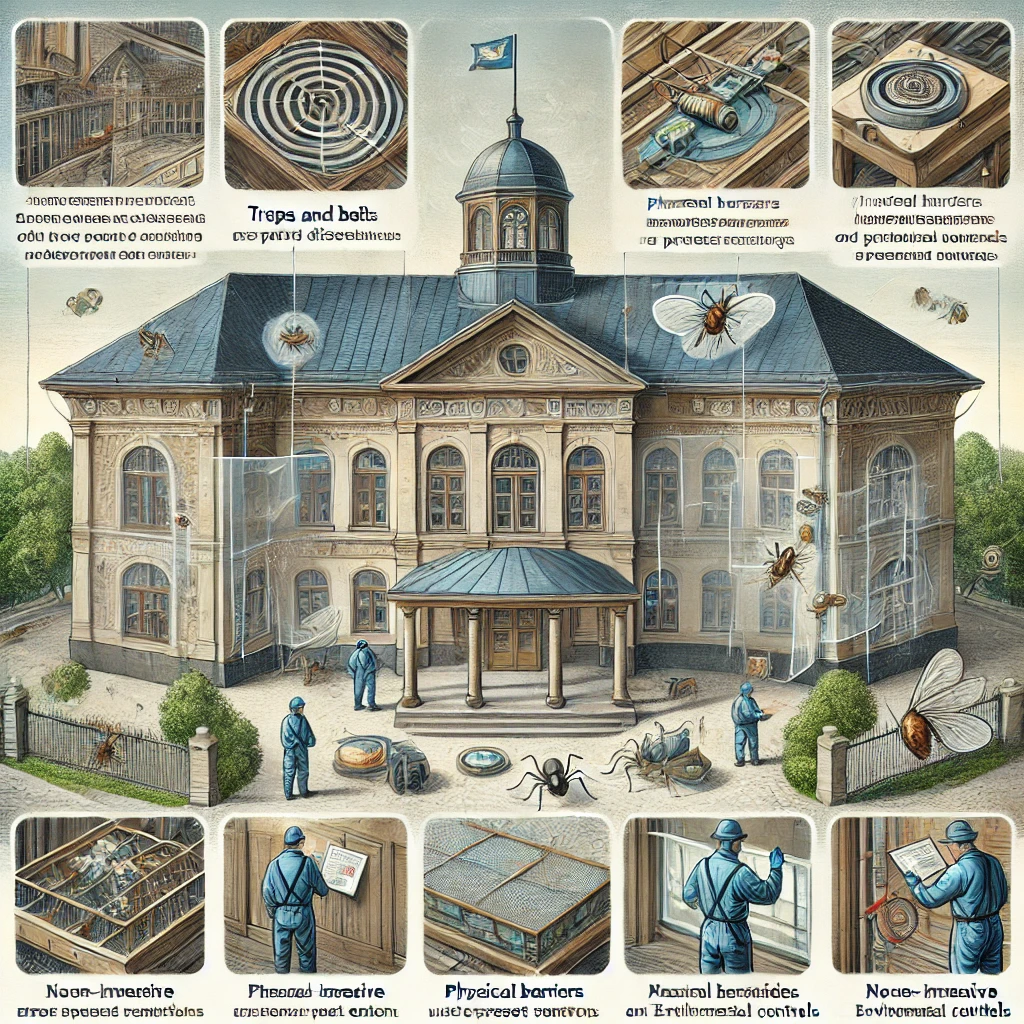
Introduction to Pest Management in Historic Buildings
Historic buildings are valuable cultural assets that connect us to our past and preserve architectural heritage. However, these buildings are often vulnerable to pest infestations that can cause significant structural damage and threaten their preservation. Pests such as termites, woodboring beetles, rodents, and birds can compromise the integrity of historic materials like wood, stone, and textiles. Therefore, effective pest management in historic buildings is crucial to safeguarding these irreplaceable structures while maintaining their historical and aesthetic value.
Challenges of Pest Control in Historic Buildings
Pest control in historic buildings presents several unique challenges. Unlike modern structures, historic buildings may have aging materials, hidden voids, and complex architectural features that provide ideal conditions for pests to thrive. Additionally, the use of conventional chemical treatments can be problematic, as they may damage delicate materials or leave residues that are harmful to both the building and its occupants. Furthermore, the application of physical controls, such as traps or barriers, must be carefully planned to avoid altering or damaging the building’s original features. These challenges require a careful, tailored approach to pest management that respects the historical significance of the property.
Non-Invasive Pest Control Techniques
Given the need to protect the integrity of historic buildings, non-invasive pest control techniques are often preferred. One common method is Integrated Pest Management (IPM), which emphasizes monitoring, prevention, and the use of least-toxic treatments. For example, traps and baits can be strategically placed to control rodents and insects without affecting the building’s structure. Physical barriers, such as sealing cracks and installing screens, can also prevent pests from entering the building while preserving its original appearance. In addition, environmental controls like dehumidifiers and proper ventilation can reduce conditions that attract pests, such as excess moisture, which is crucial for preventing mold growth and wood deterioration.
Use of Biological Controls and Preservation Techniques
Biological controls offer another effective and less invasive option for managing pests in historic buildings. Introducing natural predators, such as parasitic wasps to control woodboring insects, can help manage pest populations without harming the building materials. Additionally, preservation techniques, such as wood treatments that repel pests or the use of non-toxic insecticides derived from natural sources, are often employed to protect valuable materials. These methods not only control pests but also contribute to the long-term preservation of historic properties by minimizing chemical use and maintaining the building’s structural integrity.
Ongoing Monitoring and Maintenance
Regular monitoring and maintenance are essential components of a successful pest management strategy for historic buildings. Conducting routine inspections allows for the early detection of pest activity, enabling prompt action to prevent infestations from becoming severe. Maintenance tasks, such as repairing leaks, sealing entry points, and removing debris, are crucial for creating an environment that is less conducive to pests. Engaging conservation experts and pest management professionals who specialize in historic properties ensures that any interventions are appropriate and effective, helping to preserve these cultural treasures for future generations.
